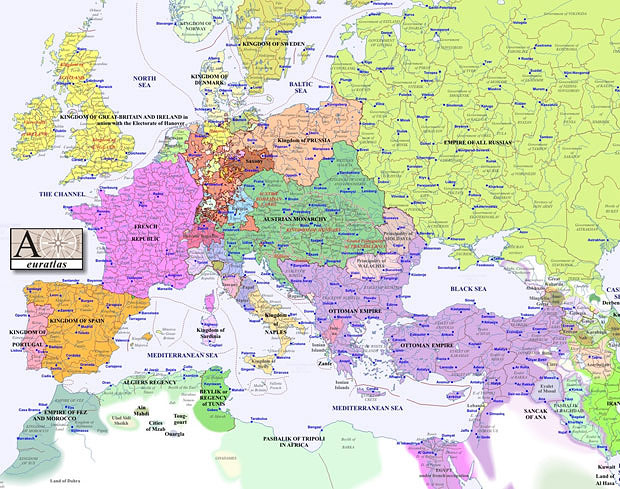The eighteenth century saw the maturation of the modern state and domestic stability. For 80 years no state threatened to dominate Europe and a balance of power existed although trouble brewed in Eastern Europe as Russia grew at Poland and Turkey’s expense and France and England continued to battle over colonies particularly in America and India. Two international conflicts, the war of Austrian Succession (1740-48) and the Seven years war (1756-63) broke 20 years of international peace within Europe, England became engaged in the American War of Independence and French absolutism under Louis XV proceeded the French Revolution at the end of the century. This was the age of bohemia and throughout the century Paris began to lead in fashions, arts and philosophy with works from the likes of Rousseau. The Baroque period continued until the 1730s followed by Rococo (1720-1780) and Neoclassicism (1750-1830), and as the Industrial Revolution spreads through Europe Romanticism develops towards the end of the century.
Artist/ArtWork
Historical Map


